A man who knows the depths of that incident…? There’s a third “Osho” in Osaka.
The original taste of “Gyoza no Ousho” at “Cheap Ousho”…
Are you a “Gyoza no Ousho” fan? Or do you prefer “Osaka Ousho”? I am neither. But I am not either of them, I am the “other Ousho”. I am not either of them. However, there is a third Ousho called “Cheap Ousho” in Osaka.
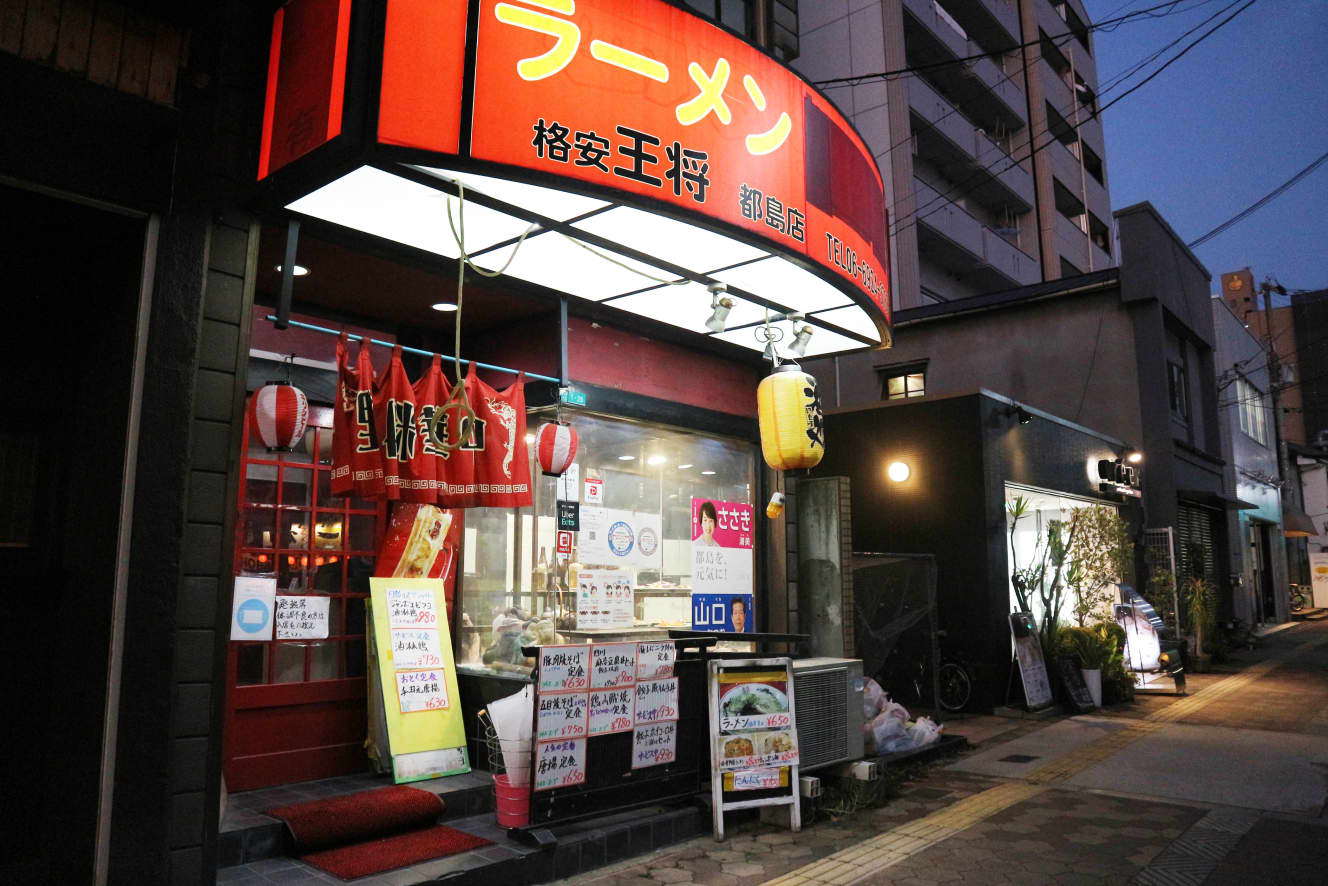
It is located in Miyakojima, which is a very maniacal area in Osaka. It is located along a main street right in the middle of Miyakojima Station on the Osaka Metro Tanimachi Line and a difficult-to-read station called Noe Uchindai.
Upon entering, you will see a large TV showing foreign movies. Some regulars seem to be drinking beer even in the afternoon, but this is a normal sight in Osaka, so I am not too surprised.
Behold the sheer number of items on the menu! When I asked the wife about it, she said, “There must be about 150 items on the menu. I haven’t counted them. Gyoza, hapaocai, sweet-and-sour pork, etc. are the usual items on the menu, but there is also a wide variety of dishes that are far removed from the typical Osho menu, such as motsu nabe, steak, bonito tataki, and seafood with egg and rice bowl.
When the wife asked me what I wanted to cook, I told her I wanted to order “Tataki Katsuo (bonito chop),” to which the owner replied from the back, “The color of today’s bonito is not so good. The wife started mumbling, “Why don’t you cook what you want to cook?” I was a pacifist and stopped the fight from breaking out, saying, “I’m sorry, it’s fine.
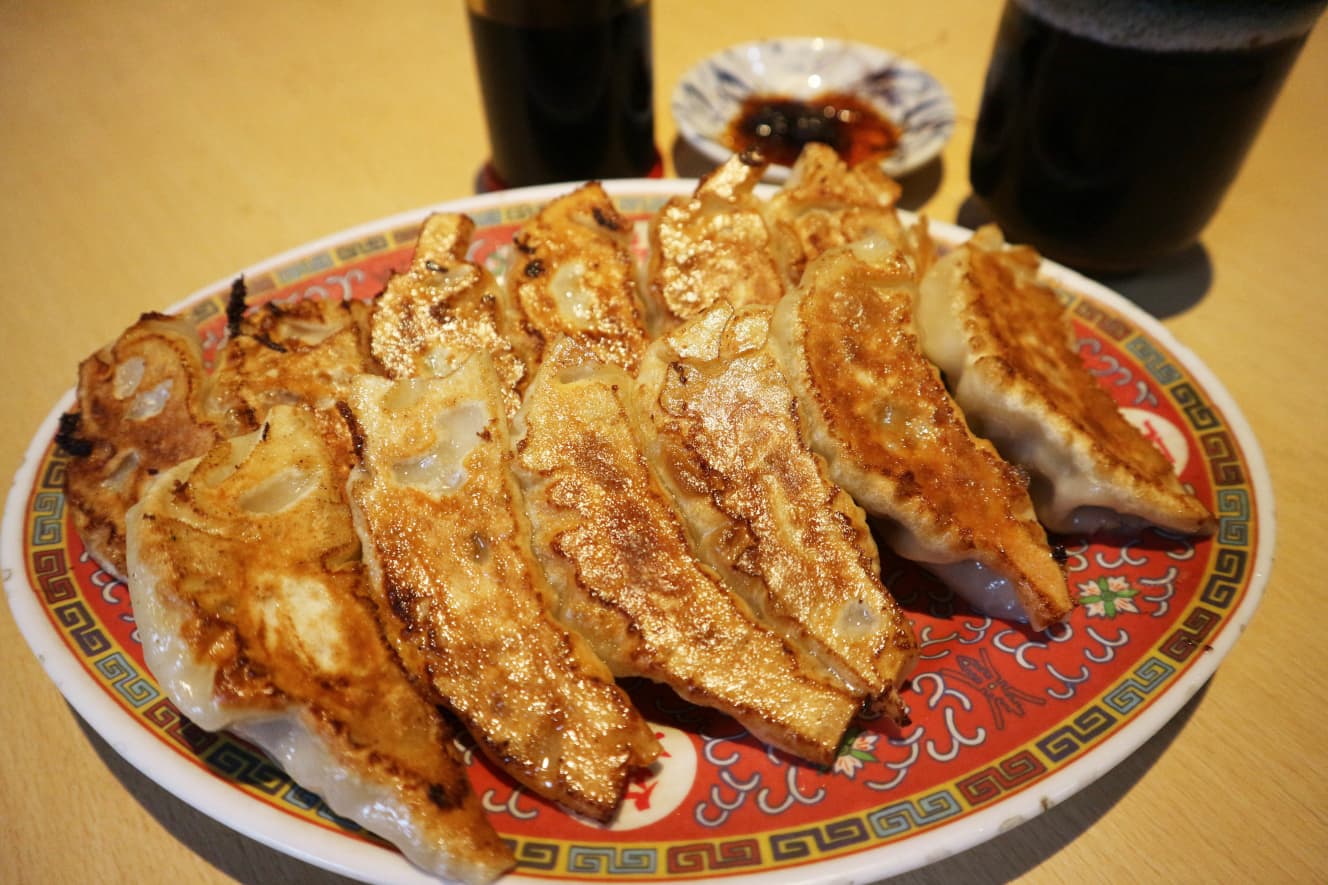
So I ordered the jumbo gyoza, a plate of 6 pieces for 270 yen. They are a little more expensive than the Gyoza no Ousho, but they are bigger than the Gyoza no Ousho. They are well cooked with the right amount of feathers, and the visual is really beautiful.
When you bite into a hot one, you will be surprised how delicious it is! The crispy skin is filled with juicy, garlicky bean paste. The spicy sauce with chili peppers enhances the taste of the dumplings. I can’t say it out loud, but in my opinion, it is definitely on a higher level than Gyoza no Ousho.
The owner, Mr. Ikeda, was the man behind “Gyoza no Ousho” for years!
The owner, Mr. Zenichi Ikeda, of course, does not call himself “Ousho” without permission. As you can imagine, he is a graduate of Gyoza no Ousho, in other words, a thoroughbred of the gyoza world. He was born in Miyazu City in the northern part of Kyoto Prefecture and started his career in Chinese cuisine at the age of 15 in Kyoto City. 24 years old, he joined Ousho Gyoza and was asked by the headquarters to become the owner of the Kyobashi Branch (at that time). He eventually became a successful Ousho man, managing the Kyobashi store, the Tokyo-bashi store, and the No. 163 store located along Route 163. Moreover, Store No. 163 was a big seller, so if he had stayed there, he would have become an executive of Ohsho.
He was deeply involved with the late Takayuki Daito, the former president of Osho, and he chose his current path because of the store compensation issue and other problems .
Now, let’s go back to the peaceful gyoza. These dumplings tasted just like the ones at Gyoza no Ousho more than 40 years ago, when Mr. Ikeda first entered the restaurant. The mince is made of chewy pork udes, and the ingredients are genuine lard, soy sauce, salt, and sansho (Japanese pepper). The mince is made with pork ude, which has a firm, chewy texture, and is flavored with genuine lard, soy sauce, salt, and sansho (Japanese pepper). The key to making the bean paste is to “knead the minced meat until it loses its shape, and after adding the vegetables, do not touch it too much so that the water does not run out. The baking method is also very particular, with more water added and the dumplings cooked for six and a half minutes. At Gyoza Ousho, it takes 3 minutes and 30 seconds, which is almost double the time required at Gyoza Ousho. Steaming the dumplings properly is very important.
The sauce is made with homemade raayu, a blend of sesame oil, white chili oil, and a dash of spice, and vinegar (6:4) and soy sauce (4:1). The thread of chili pepper does a good job.
Why is the daily set meal a jumbo shrimp every day?
When I looked at the rest of the menu, I couldn’t help but notice the daily “Special Set Lunch”. For some reason, “Monday: Jumbo shrimp mayo + pork ginger yaki”, “Tuesday: Jumbo shrimp chili + sweet & sour pork”, “Wednesday: Jumbo shrimp chili + pork stamina yaki”, “Thursday: Jumbo shrimp tempura + sweet & sour chicken”… Every day, there is a mysterious “jumbo shrimp special”.
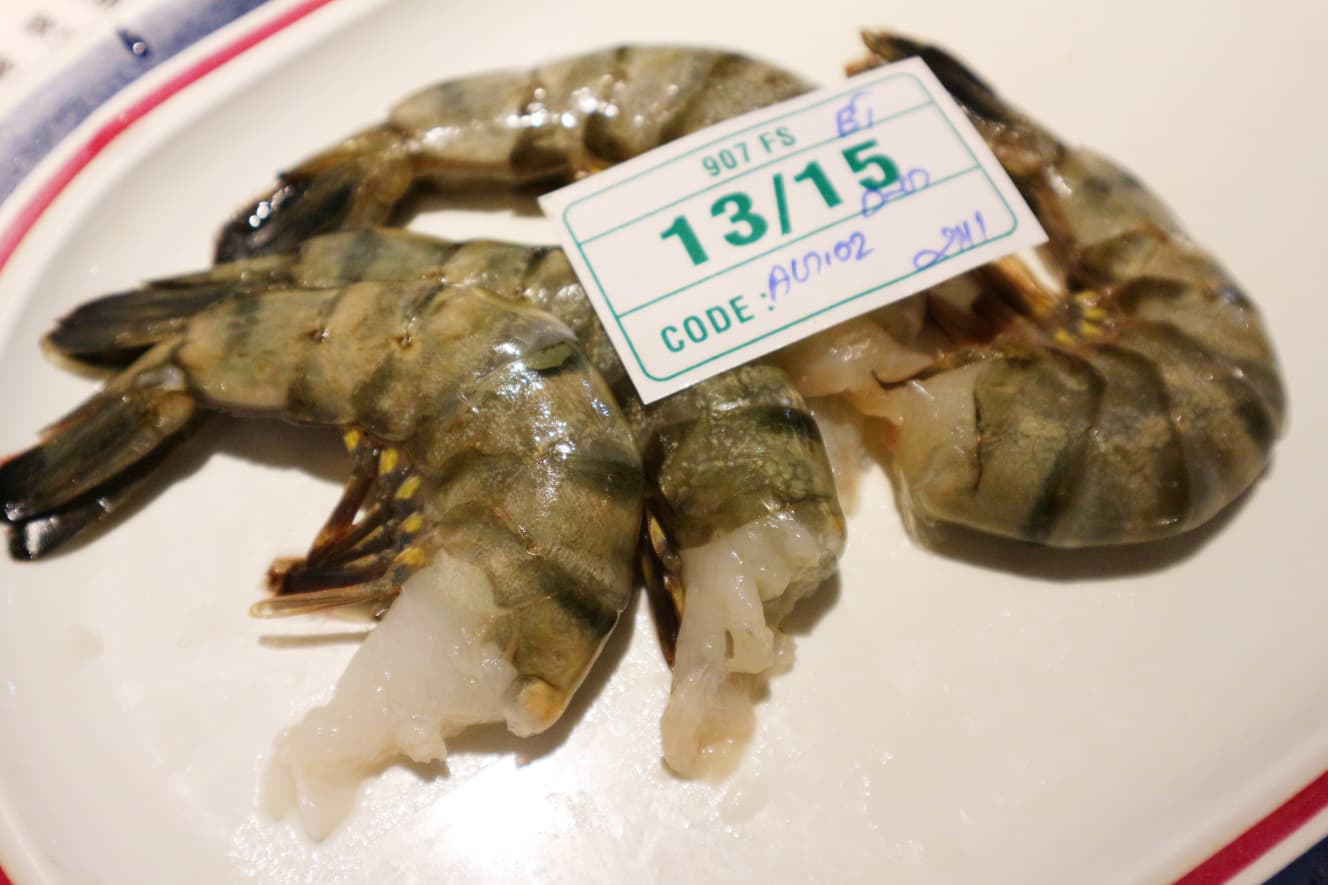
When I asked him why he only tried to feed us shrimp, he told me that the shrimp used at the restaurant is a huge shrimp called “Black Tiger No. 13/15,” which is a rare shrimp that is purchased through a special route.
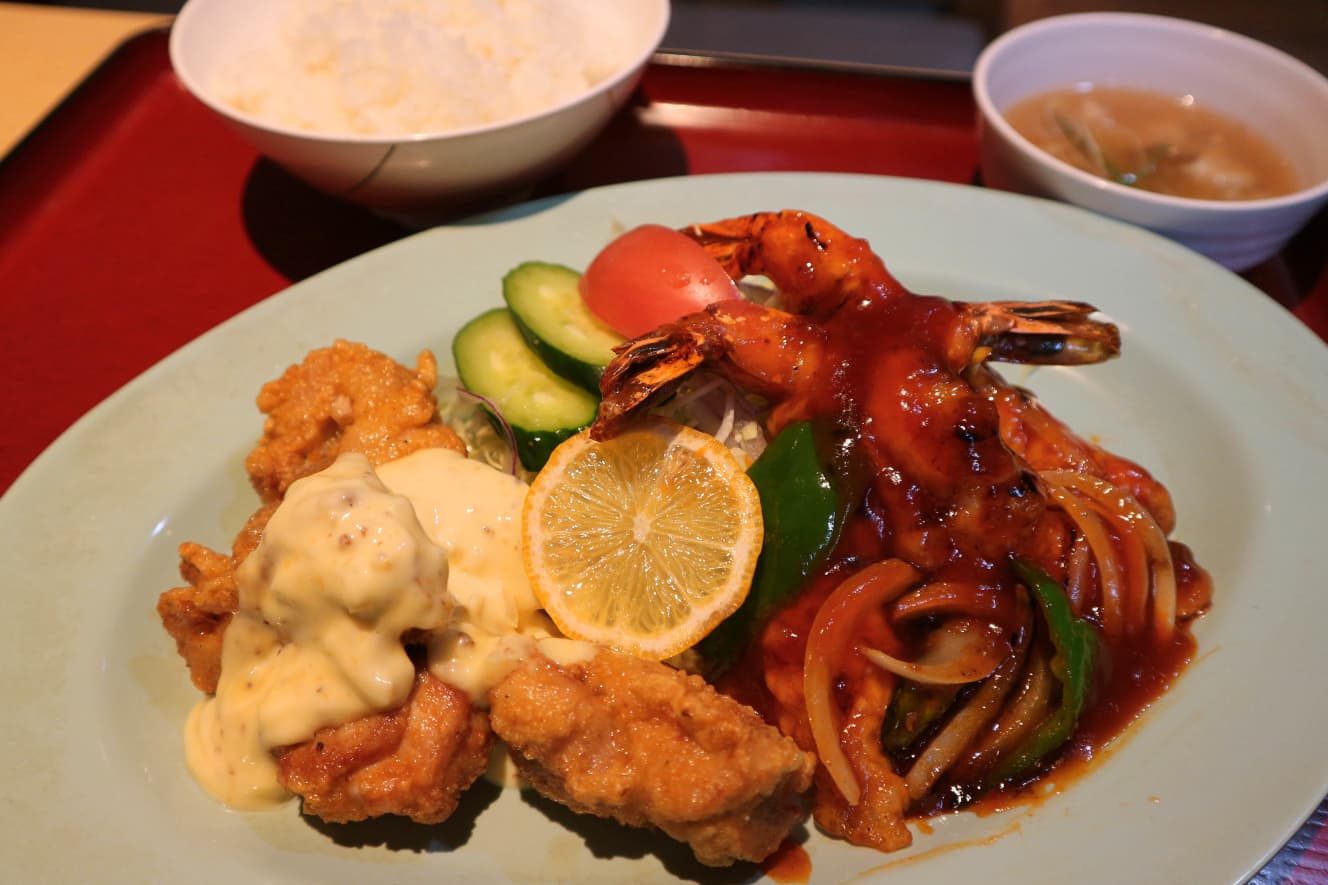
I ordered the most popular “Saturday Special”. It is “Jumbo Shrimp Chili with Chicken Nanban. The jumbo prawns are huge, but they are even bigger and covered with chili sauce and batter! Chicken Nanban is also very large. Chicken Nanban is also very large and quite heavy. Mr. Ikeda said, “By the way, most of the people who come to our restaurant eat a lot of food. He has just noticed that the portions are obviously much larger than those at ordinary restaurants.
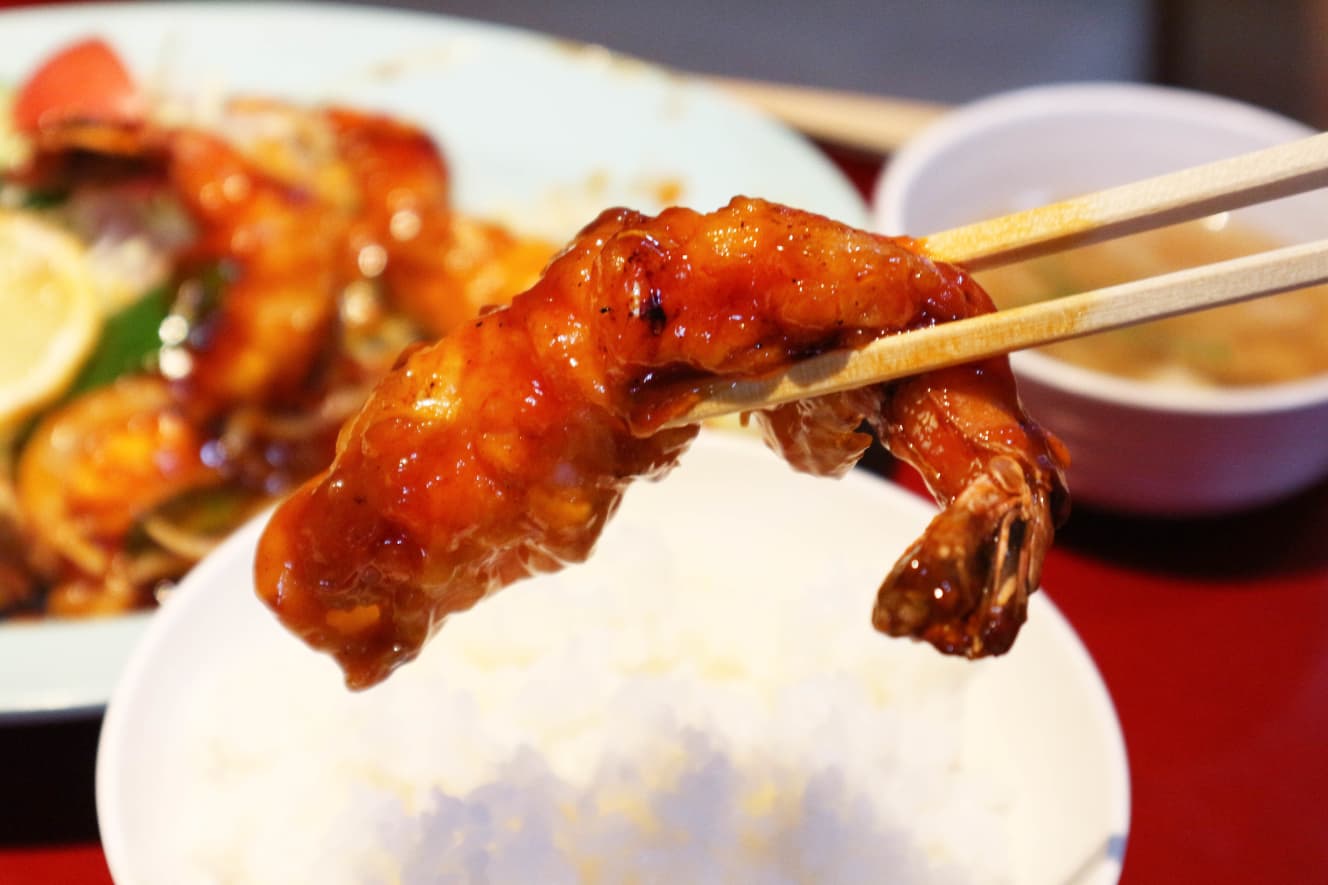
The tartar sauce is so important in chicken nanban that it is the star of the dish. The tartar sauce is also handmade from scratch, and is made with onions, eggs, mustard, and other ingredients to create a tartar with a crispy texture.
The “Mapo Yakisoba,” where you can’t even see the noodles, is unexpectedly delicious!
When I asked what else was popular on the menu, I was told that it was the “Mapo Yakisoba” (fried noodles with red bean paste). Actually, I am a character who seems to eat anything, but I don’t really like bean-curd soup and yakisoba. So I thought to myself, “What the heck…” But when I tried it, it was so good that I got a culture shock!
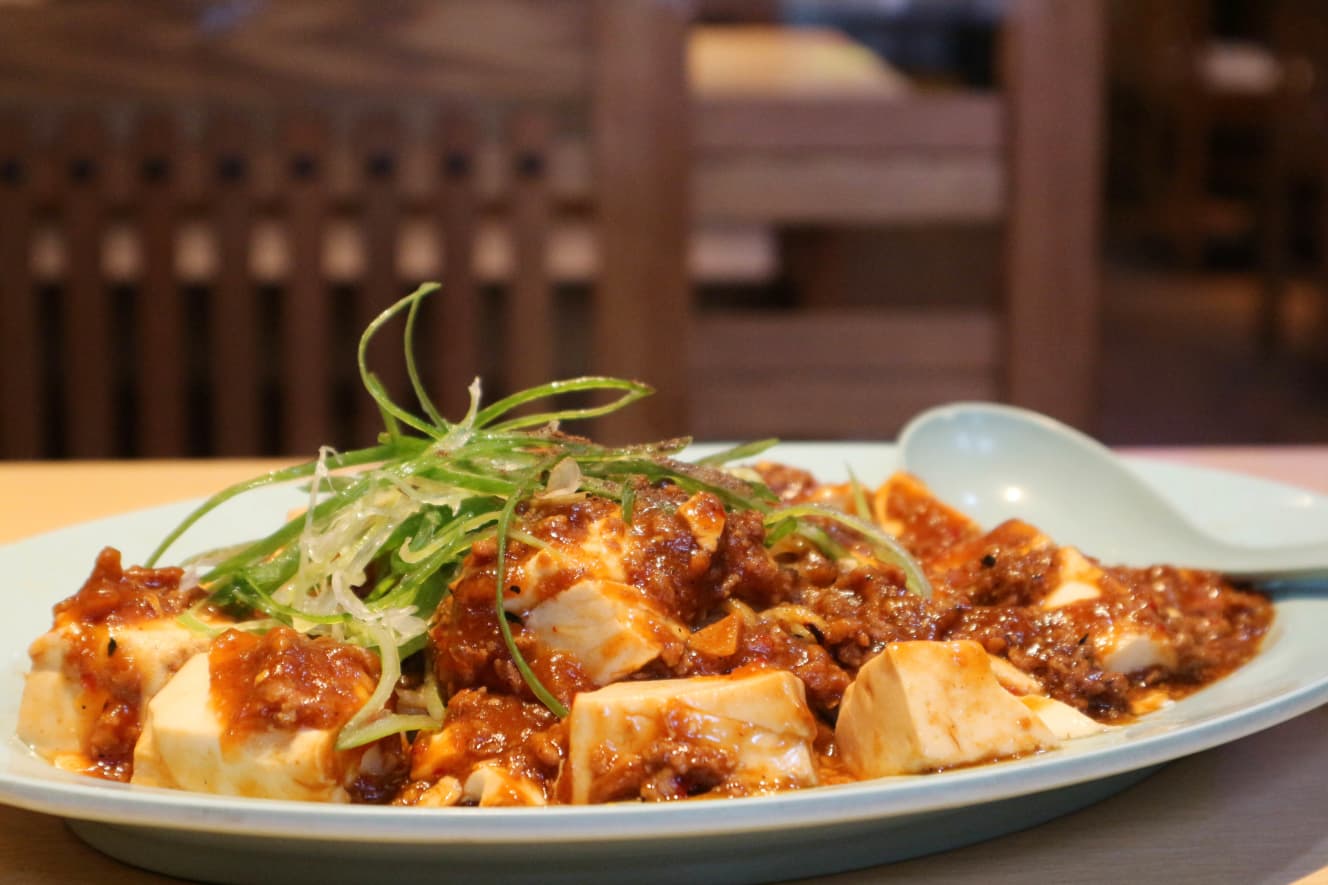
It’s almost tofu! I wanted to say to myself, “It’s almost all tofu! The bean-paste sauce is made from stir-fried minced meat, seasoned with gochujang (red pepper paste), sweet soy sauce, bean-paste, garlic, soy sauce, and other seasonings, and topped with a generous amount of sansho (Chinese pepper), making the dish spicy and full of flavor. The tofu is added at the end of the dish, so it is almost raw, leaving the silky texture intact. The fried and baked noodles are also fragrant. Since most of the ingredients are tofu, it can be considered a healthy food. It will be appreciated by girls on a diet (although the amount of noodles is huge).
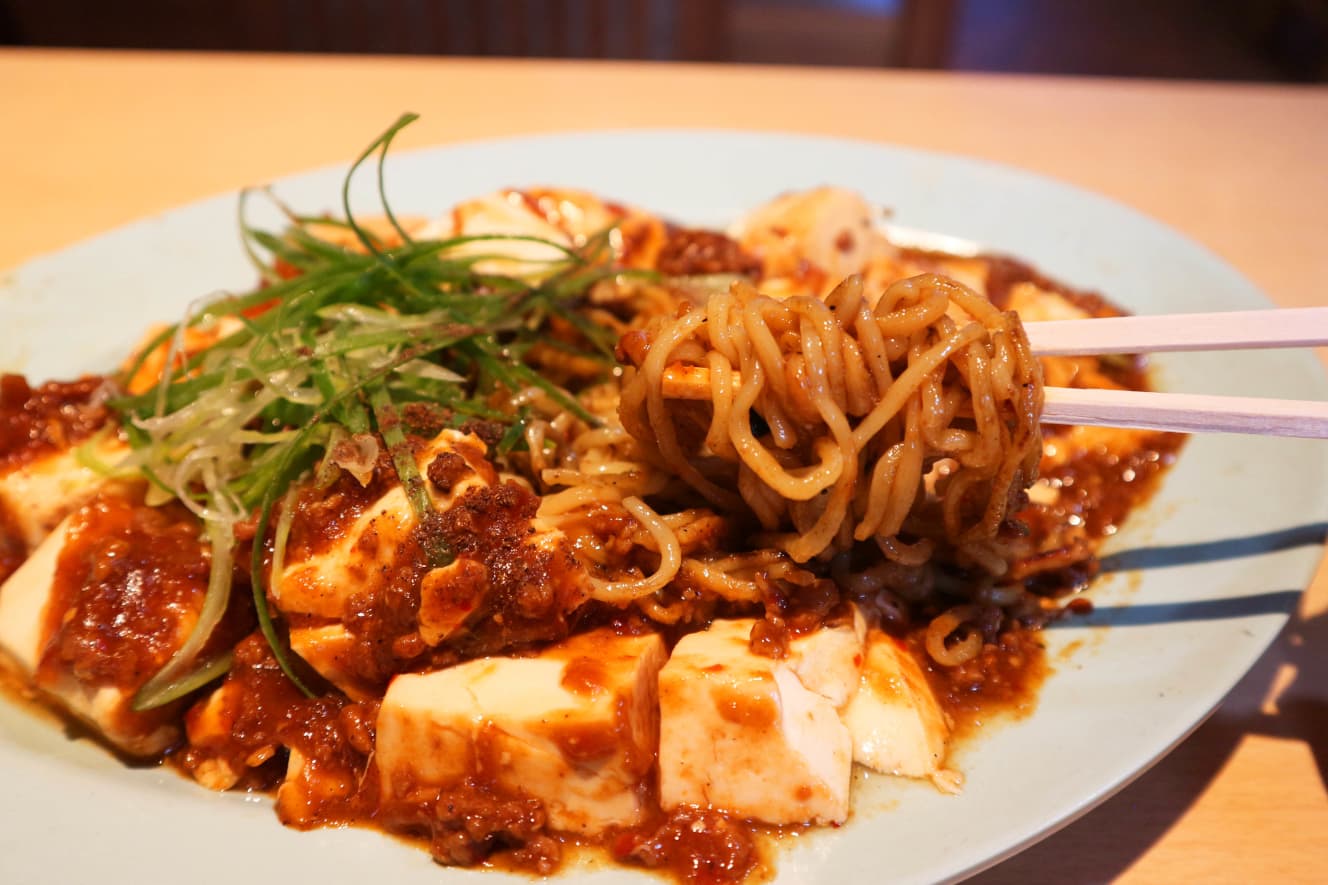
If you spend 1,000 yen, you will have enough change. It’s “Senbero Ousho,” which means “the king of the Senbero” in Japanese!
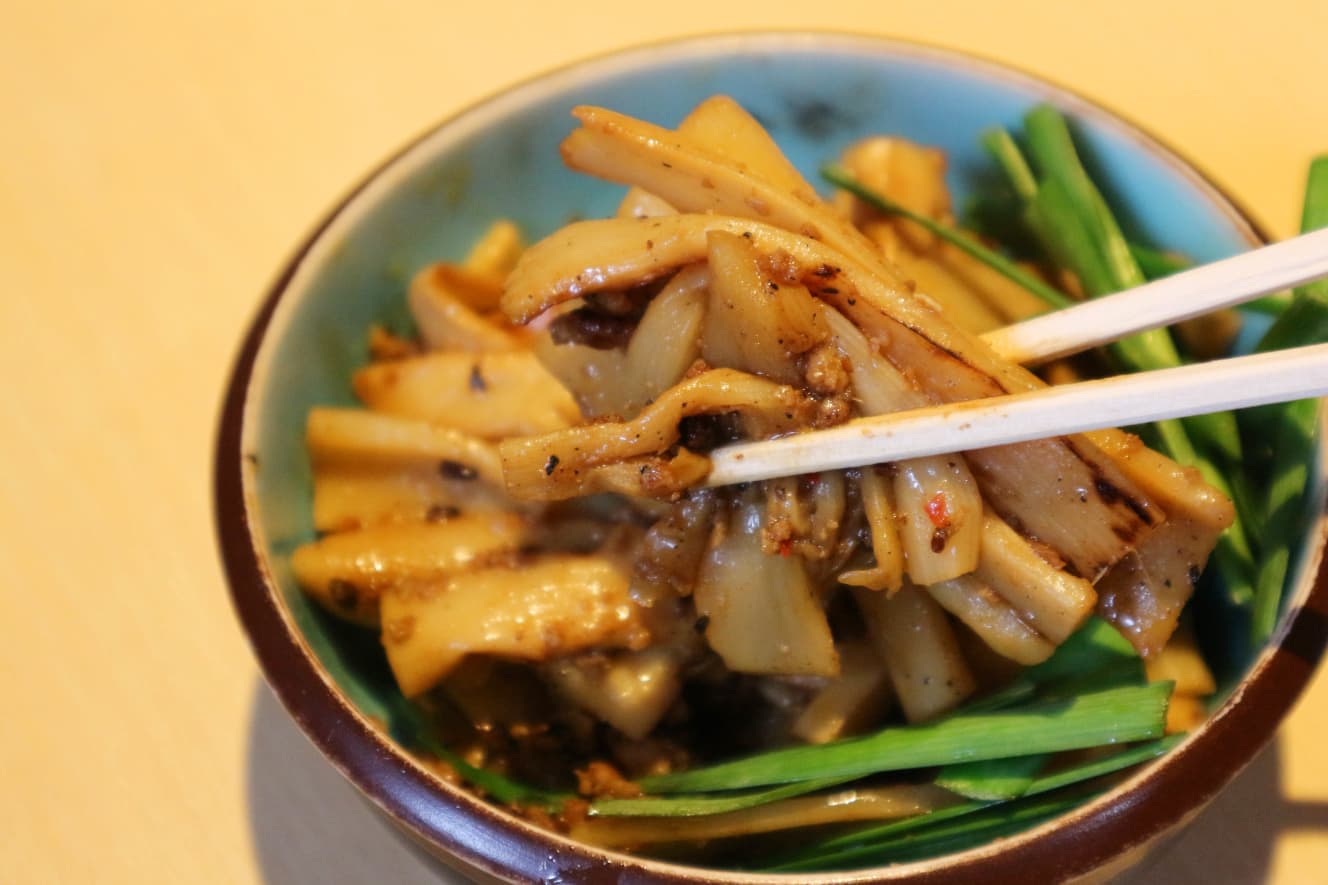
I had the fried pickled bamboo shoots for a break, and it was hard to believe it was only 280 yen. If you think about it, 270 yen for a highball + 270 yen for gyoza + 280 yen for fried bamboo shoots, you can have a normal drink for less than 1,000 yen.
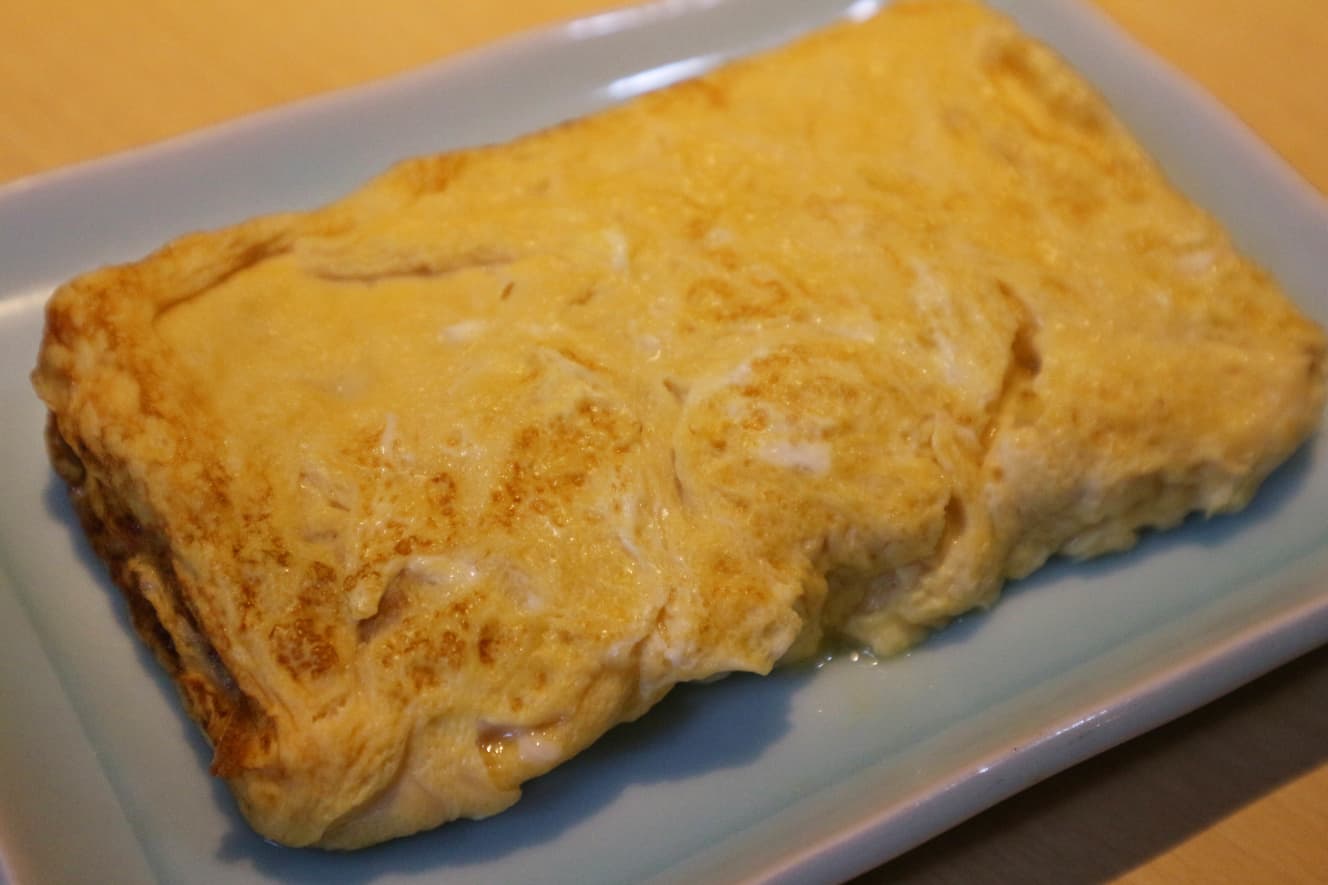
To top it off, I ordered the “dashimaki tamago,” which is definitely not found at Gyoza no Ousho. Four eggs. The soup stock, mirin (sweet cooking sake), and sake flavoring make the dashimaki a bit strong, which makes the beer go down a bit. The texture is not soft and fluffy, which seems to suit the clientele in this neighborhood.
Mr. Ikeda is 72 years old, but his life has been very eventful. He has had such epic experiences that no matter which part of his life you pick out, you can’t help but think, “Oh, man, he had a fire at his Kyobashi restaurant,” “He had 450 million yen in debt,” “He now lives in a five-bedroom apartment,” etc. I’m afraid that if I write about it here, the comment section will get a bit rough, so I’ll stop.
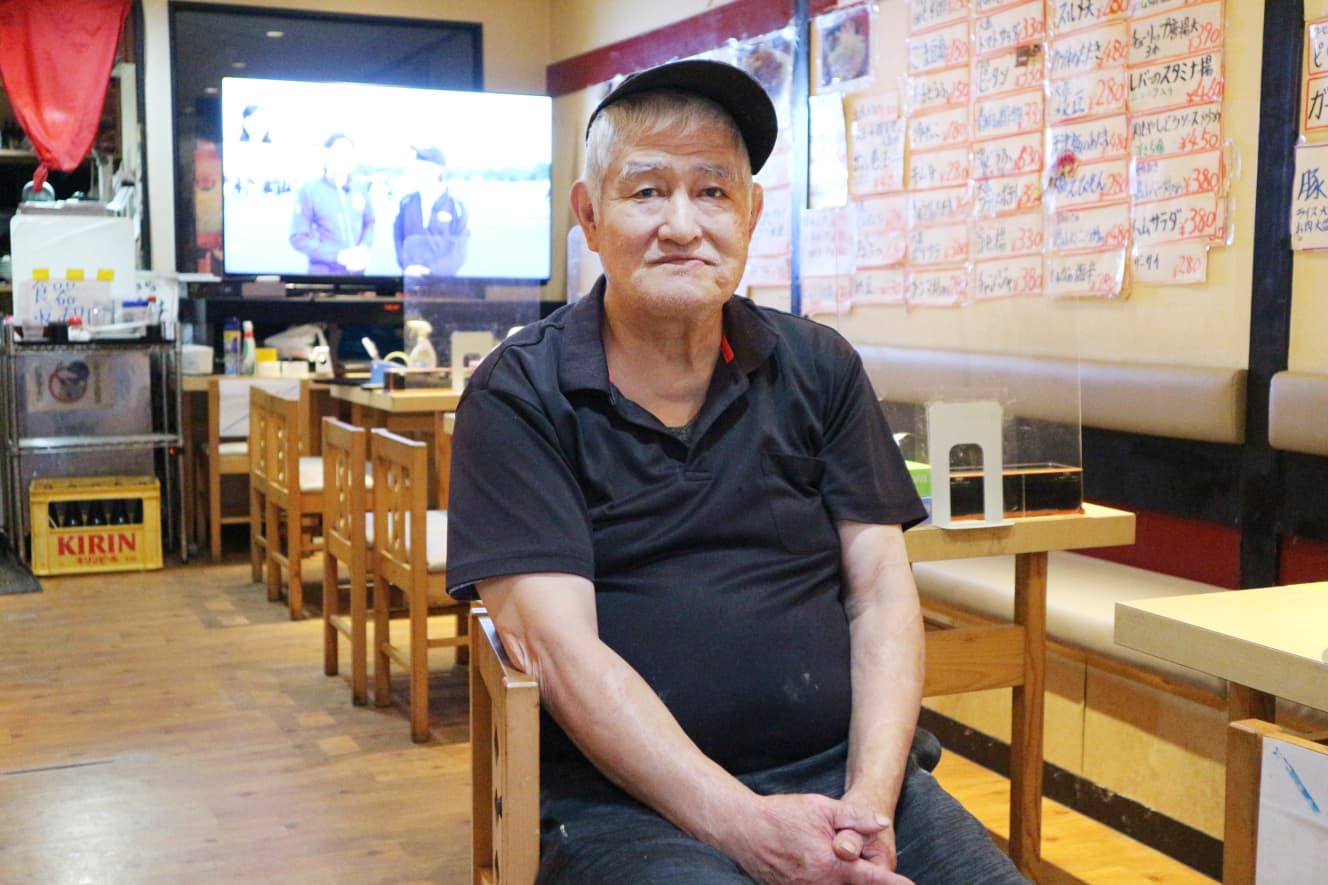
Also, Mr. Ikeda told us many episodes about Gyoza no Ousho, but I am just a foodie, so I only listened to his stories about food (laugh).
By the way, when I revisited the restaurant later that day to try the bonito tataki with good color, I was surprised to find it temporarily closed…. I was told, “Oh, it was raining, so we thought no customers would come, so we closed the restaurant. That’s how we do it. The restaurant is “basically open all year round,” but sometimes there are days like this, so you might want to call before you go!
Cheap Osho” 2-1-28 Miyakojima-kitadori, Miyakojima-ku, Osaka-shi, Osaka
Interview, text, and photographs: Shigeru Nekota
Born in 1979. Worked as an editor and writer for town magazines, travel books, and recipe books. Currently, as a web writer, he writes on a wide range of topics from decadence to traditional crafts. He loves to drink despite his weakness, and his life motto is "Sake is best drunk while walking.
Another blog
Shigeru Nekota's food blog "I love quirky restaurants! https://nekotashigeru.site/




